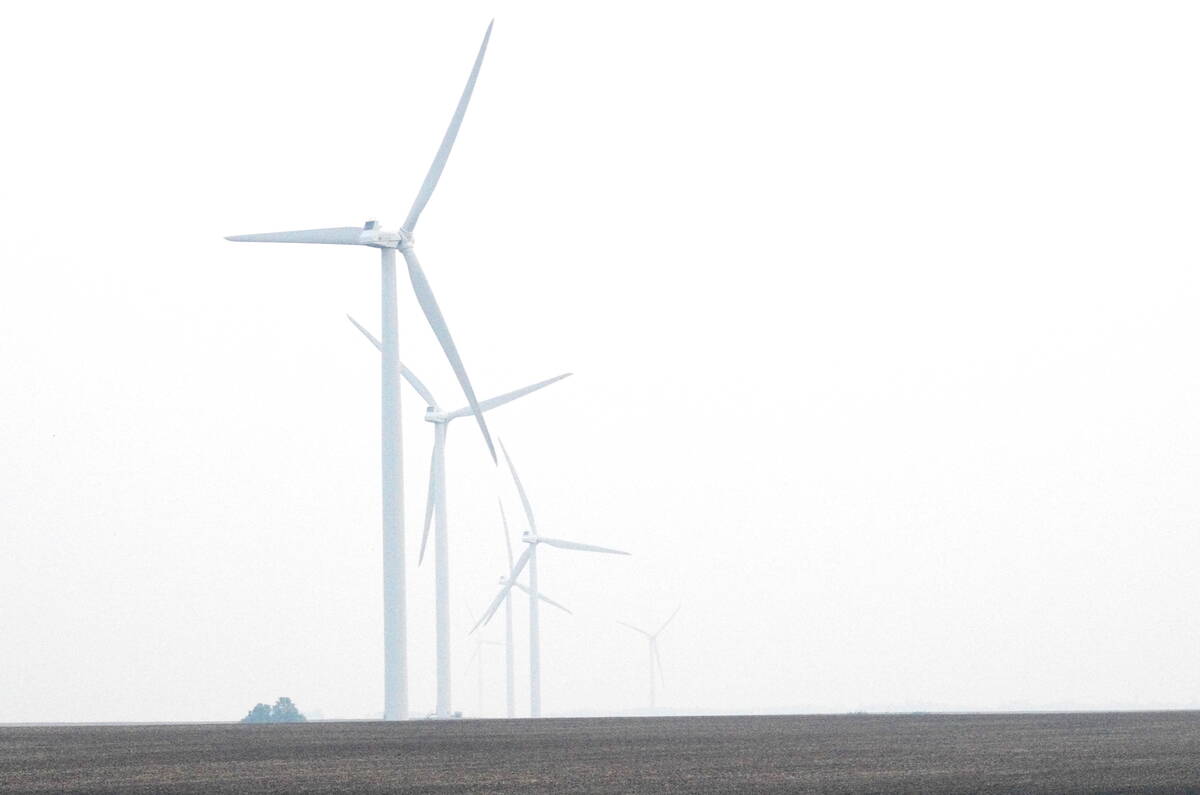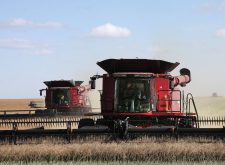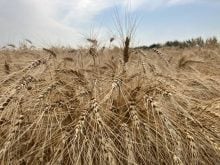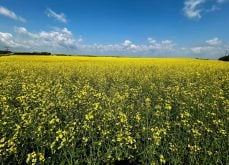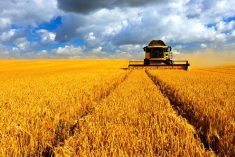Elm Creek | Reuters — Colin Penner, who farms about 3,700 acres near Elm Creek, Manitoba, crunched up a handful of plump canola pods and blew the chaff into a stiff Prairie breeze. A small pile of tiny black seeds remained in his palm.
Last summer, high heat and harsh sun scorched canola’s yellow flowers and ruined their pollen, knocking down yields across Western Canada. This summer, smoke from nearby wildfires shrouded the July skies and protected Penner’s young crop from the sun’s burning rays, resulting in more seeds per pod and more pods per plant.
Read Also

U.S. grains: Soybeans bounce as Chinese demand assessed, wheat drops
Chicago soybean prices firmed on Friday in a bargain-buying bounce after a sharp fall on Thursday, as traders assessed prospects for more U.S. sales to China after the trade war truce between the countries.
“Look at all these pods,” he said. He would wait to see what the harvest brings, but “smoke will likely be a positive thing.”
Protection from extreme heat
As Canada’s western provinces experience the second-worst wildfire season in decades, driven by hotter and drier conditions due to climate change, some canola farmers say they are seeing an unexpected benefit to the hazy summer skies – so long as they occur in July, when the crop is flowering.
The smoke is shielding the delicate flower petals and pollen of canola plants from intense heat and sunlight, mitigating the impacts of a drought which continued through most of this summer.
The finding contrasts with scientists’ understanding that extended periods of heavy smoke have largely negative impacts on crop yields and food quality.
Reuters spoke to dozens of farmers and 10 crop experts who said the smoky skies of midsummer had mainly positive impacts for canola – although the experts cautioned that more research is needed.
Bruce Burnett, a crop analyst with the Western Producer Markets Desk, told Reuters that the smoke’s cooling effects countered high daytime and nighttime temperatures, which can hurt the crop when it’s flowering.
Canada is the world’s largest producer of canola, growing 21 million acres in a band along the country’s vast northern forests. Its seeds are crushed to make cooking oil, biodiesel and animal feed.
Canola, which is grown mainly on the cool northern plains of North America, Europe and China, and as a winter crop in Australia, does not like it hot. Scorching heat can melt its pollen, preventing fertilization and seed production. Harsh sunlight can burn off flower petals.
“We’ve had a couple of really hot Julys where we’ve had temperatures above 31C (87.8°F) and that’s where the damage occurs,” said Curtis Rempel, vice president of crop production and innovation at the Canola Council of Canada.
Smoke can lower temperature and dim sunlight, he said.

Scientists revisiting ideas about smoke
The United Nations’ climate science panel, the Intergovernmental Panel on Climate Change, in 2022 forecast that a hotter world with shorter winters would lead to longer and more extreme wildfire seasons.
Canadian government officials said in August that wildfires were already growing longer and more intense as winters become shorter, and spring, summer and fall warmer.
Four of the crop experts who spoke to Reuters said smoke is probably mostly bad for North America’s biggest crops, like corn and soybeans, reducing heat and sunlight which the plants need to grow.
In California, smoke from wildfires has devastated wine grape production, with severe damage in 2017 and 2020.
In Ohio, researchers found mixed effects. While the smoke reduced light and lowered temperatures, average yields of corn, soybean and wheat reached a 10-year high, the researchers found.
The Canadian government is launching research next year on how wildfire smoke is affecting canola, wheat and barley, said Raju Soolanayakanahally, a senior researcher at Agriculture and Agri-Food Canada.
Despite farmers’ accounts of some benefits to this year’s canola crop, smoke can also slow and weaken crop development, Soolanayakanahally said. The haze can degrade the chlorophyll that is essential for photosynthesis and reduce the efficiency of enzymes that are critical to plants’ development.
An industry review of existing research on the effects of smoke on U.S. corn also found a mostly negative effect.
However, Mark Jeschke, Agronomy Manager at Corteva Agriscience’s Pioneer Seeds and author of the study, told Reuters further research was needed on how ground-level and airborne smoke affect corn when it is pollinating and maturing. “The timing of a stress event can matter a lot.”
Smoke-tainted wine
In 2020, when more than 8,000 fires tore across 4.3 million acres of California, most vineyards escaped direct damage from the flames. But vintners later discovered the grapes produced a slurry tainted by a foul taste and smell, making it unusable for wine. The term “smoke taint” became part of the wine lexicon.
Up to 325,000 tons of wine grapes worth more than $600 million were ruined that year, according to the California Association of Winegrape Growers.
The industry and researchers have been experimenting with treatments to remove smoky compounds from fermented grape slurry, and testing a spray that would prevent grapes-on-the-vine from absorbing smoke.
“We still have so much to do,” said Natalie Collins, the president of the California Association of Winegrape Growers.

